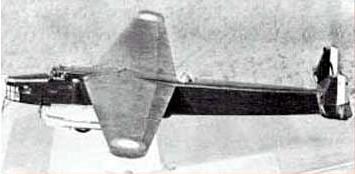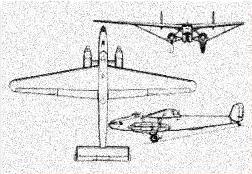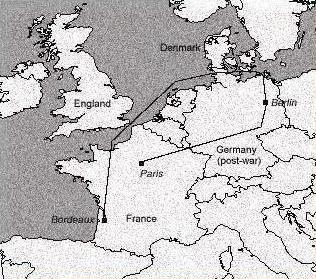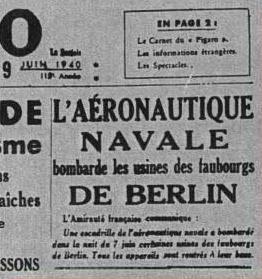
On Monday, June 3, 1940, a bit under a month after Germany invaded France, as the Dunkirk evacuation of over a third of a million troops was winding up, and eleven days before German boots would march into Paris, 300 Luftwaffe bombers pounded the city, producing somewhere between a few hundred and several hundred mostly civilian casualties. France's response was to hatch a plan to bomb Berlin in a retaliatory strike. This was not to be an effectively destructive raid, but rather a psychological attack, much like, although even smaller than, the US raid on Japan, flown by B-25 medium bombers from the carrier Hornet nearly two years later.
Who would deliver this message to Berlin? The French Navy, flying from the Bordeaux Merignac airfield, in southwestern France near the Bay of Biscay coast. With one airplane, a Farman 223.4 - one of three that the Aeronavale possessed. The 22x series served as transports, mail planes, recon platforms and heavy bombers, with up to a five-man crew. The craft was a high-wing monoplane with four engines arranged as one tractor and one pusher per side, which shared a long nacelle. As a night bomber, the airplane was painted flat black. As configured for this mission, it would carry a 2 metric ton (2200 pound) bomb load.


In the mid-afternoon of June 7th, the Jules Verne (as this plane was named) took off with Captain (or Lieutenant) Dailliere as pilot and a navigator from the airline Air France. Dailliere had taught navigation at the French war school. Their route took them northward to the English Channel, and then north-eastward to Denmark, near where, over the Schleswig island of Sylt, they encountered their first heavy AA fire. They continued into the Baltic Sea, from which they entered Germany and approached Berlin from the north at what Dailliere described as "high altitude". He continues, "I got ready to release the bombs and realized that someone had failed to install our bombsight, so I pressed my nose to the glass of the cockpit." He wasn't able to identify natural landmarks, and Berlin was blacked out; but once the city's searchlights came on, to guide the German flak batteries to their target, the city was defined. Dailliere tried to create the impression of more than one airplane, and lingered over the city toward this end. He then dropped his bomb load over some factories in Berlin's north end.


Figs. 3 & 4: Route of raid from Bordeaux; and announcement of the raid by a "formation" of bombers, in French newspaper.
Striking a straighter path back to France than the Jules Verne's outbound route to Berlin, Dailliere made for Paris by crossing the width of the very heart of Germany, and landed at Orly Airfield. They met no resistance on that return leg, in the form of AA or interceptors, and when the aircraft touched down, it had covered nearly 3,000 miles in 13.5 hours.
The French played up the raid considerably. They described it as having been accomplished by a "formation" of bombers, and reported - truthfully - that no bombers had been lost.